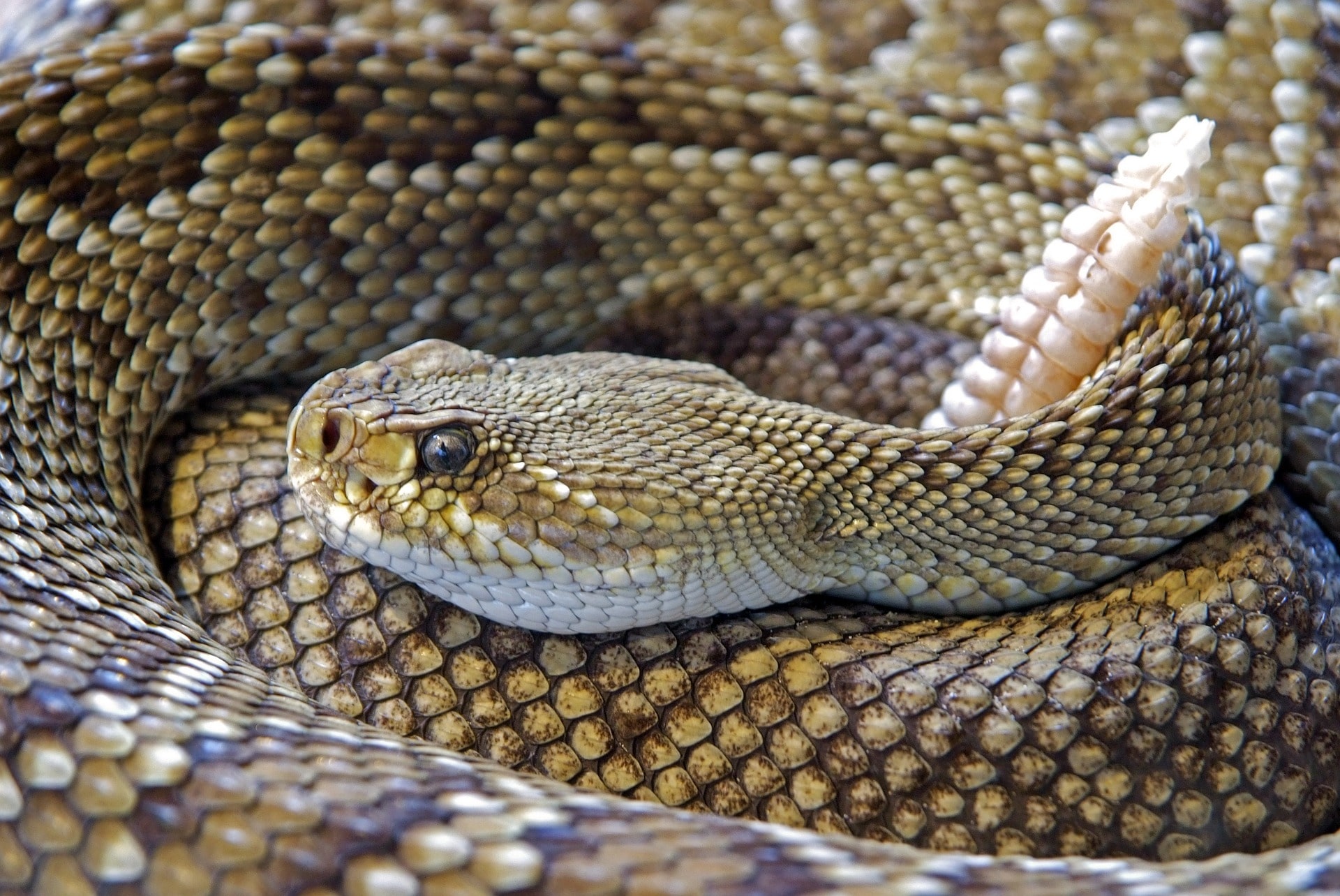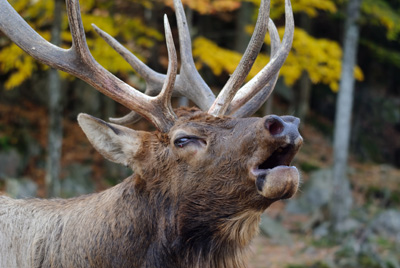Rattlesnakes and Hunting
Are You Prepared?
Rattlesnakes and hunting don’t mix! I think we can all agree on that. Does fear of encountering a rattlesnake prevent you from planning an elk hunting trip? How can you be prepared for rattlesnakes on your elk adventure? What should you do if – heaven forbid – you are bitten by a rattlesnake. I tackle all of these and more in today’s post.

“Pssst! Dad!” My son whispered much too loudly. “Quiet!” I answered with an annoyed tone in my voice. He had been hunting with me since he was small, and I had taught him to be as quiet as possible in the woods. At this point he was in his late teens, and knew better.
Elk camp has always been a family vacation. I have always tried to give my kids the opportunity to go out in the field with me. Evenings are a good time to take the kids along on the hunt and teach them about nature, while I hope to see an elk.
That year we were hunting in southwestern New Mexico, and the elk had been sparse in an area that was new to us. On that particular afternoon, my two sons and one of my nephews were in tow. We had seen a bull cross an opening some distance away, and had hurried to try and get in front of him. We were sitting on the edge of a meadow, listening and looking after calling a few times. I felt that the bull could appear at any moment.
“There is something in the grass.” My son was no longer whispering, but spoke with normal volume and a sense of urgency. That’s when I realized that I had better investigate. I turned to walk toward that boys, when my son stood up and said “It’s a snake!” He ushered the younger boys back as the slithering reptile poked its head out of the tall grass. The rattlesnake was only about 4 feet long, but had a significant girth for its length. My son had noticed the tall grass parting as it moved toward him and the boys.
The sight of a snake tends to spike my adrenaline. Adrenaline tends to elicit a “fight or flight” response. The severity of my response depends on the proximity of the snake. If I am close, I will jump away. Involuntarily. If I am not too close, I will try to determine what level of evil I am dealing with. I realize that all snakes, even poisonous ones are an important part of the environment. That’s what my head says. My adrenaline says that they are all evil. If I determine that a snake is not potentially harmful, I will let my head win the argument, and let the “only slightly evil” creature continue on its way. If I see rattles, my adrenaline will wash all logic from my head. “Fight” mode will kick in.
The day of our close encounter of the snake kind, I was armed with only a bow and arrow. While I am confident in my shooting ability, there was no way that I was going to attempt shooting the snake. Especially with the adrenaline causing me to quiver from the inside out. I’ll spare you the details, but suffice it to say that we stopped evil in its belly crawling tracks that day.
How Common are Rattlesnakes?
As a retired engineer, I might be tempted to quote the statistical probability of encountering a rattlesnake while elk hunting. Even if I had the data, it would be meaningless if you have a fear of snakes. Biologists tell us that rattlesnakes can be found in almost all of the elk hunting country. So what is the likelihood that you will see a rattlesnake on your elk hunt? I can tell you that in the many years that I have been hunting, hiking and camping in the woods, I can only remember coming across a few rattlesnakes. I have seen almost as many around my house.
What to do if you see a rattlesnake?
When you see a rattlesnake while hunting, try to stay calm. If you are like me, that’s not possible. But at least try to act calm. Of course, you may be like my sister-in-law who claims to suffer from a disorder that causes profanity to involuntarily escape from her mouth when she sees a snake. Words that are not part of her normal vocabulary. If so, that’s OK.
If you see a rattlesnake, step away carefully. It’s rare, but it’s possible that there could be more than one snake in the area. So be careful where you are stepping.
After you ensure that you are a safe distance from the rattlesnake, your best option is to give it a wide berth and allow it to go on its merry way. If it is in a populated area such as your camp, you may choose to relocate the reptile. At least what’s left of it.
The same sister-in-law with the verbal disorder had a too close encounter one year at elk camp. She was walking from her travel trailer to the wall tent where our teenage boys were supposed to be settling down for the night. When she was almost at the tent door, she heard that unmistakable rattlesnake sound just as she stepped on something in the dark. Her profanity malady presented itself on full force. Her husband, who is a law enforcement officer and not a snake lover himself, went into full cop mode and was in command and control of the situation immediately. The offending reptile was relocated to multiple areas post haste.
Rattlesnake Danger
In all of my years of living in the Southwestern United States, I’ve only personally known three people who have been bitten by a rattlesnake. The first person had it coming, because he was catching and playing with rattlesnakes. He recovered, even though he was allergic to the antivenin. The second person was alone on a remote ranch without means of communication. I don’t know all of the details, but he did not survive. The third person was my octogenarian uncle, who was bitten as he reached inside an outside storage cabinet. He also survived due to top rate medical care.

Now that I have the horror stories out of the way, back to the question. What are your chances of getting bitten by a rattlesnake while elk hunting? The reality is that it is very rare to see a rattlesnake in the elk woods. Even if you see one, it is extremely unlikely that you will be bitten. Despite their evil reputation, rattlesnakes only strike when they are hunting, or if they feel threatened. So unless you are a mouse or other small critter, or you corner a rattlesnake and it feels threatened, the risk of being bitten is very low. Although I try to stay alert, the risk of rattlesnake bite does not impact my hunting plans.
Precautions for Rattlesnakes
If fear of rattlesnakes is preventing you from going elk hunting, there are some precautions you can take that may give you peace of mind. Snake boots and snake gaiters are available, but would be very uncomfortable for the miles of hiking normally required when elk hunting. Regular high top hunting boots and long pants are actually a good protection.
As a good elk hunter, you are going to try and walk as quietly through the woods as possible. This will require watching carefully where you step to avoid making noise. Thus, you will virtually always see the snake before it sees you.
What to do if you are bitten by a rattlesnake
For years I thought that I should probably purchase a snake bite kit to carry in my hunting pack for the unlikely possibility of being bitten by a rattlesnake. I don’t even know what’s in a snake bite kit, but I ran across this article while researching for this post. The gist of the article, which references a Wall Street Journal article, is that “…the overwhelming consensus seems to be that snake kits are not a great idea for treating a venomous snake bite, and in fact might even make the overall situation worse.”
So what should you do if you are bitten by a rattlesnake? Here is a link to another article that goes into detail about what to do if a rattlesnake bites you. Just as important, it also tells you what not to do. Don’t take your snake bite advice from western movies or conventional wisdom. The bottom line is that you should get away from the snake and get medical attention immediately.
Conclusion
Since we all know that rattlesnakes and hunting don’t go together, what can you do to be prepared?
- Don’t let the fear of rattlesnakes in elk country prevent you from going hunting. The risk of being in an auto accident are probably much higher.
- Be alert and watch your step. You should be doing this anyway, just be on the alert for the little devils.
- If you hear or see a rattlesnake, stay as calm as possible and move away from the threat. Alert anyone else that is nearby.
- If by an extremely rare chance you are bitten, seek medical help immediately. Having a plan in any type of medical emergency is important. Having a way to communicate with your hunting buddies and the outside world is also important. Cells phones are often useless in remote elk hunting areas.
Latest posts by Jimmie Norris (see all)
- Elk Hunting Gear Essentials – Radios - April 26, 2020
- Elk Hunting Gear Essentials – Binoculars - February 9, 2020
- Elk Hunting Gear Essentials – GPS - January 19, 2020
- Best Camo Pattern for Elk Hunting - December 1, 2019
- Elk Hunt 2019 Part 2 - November 3, 2019




